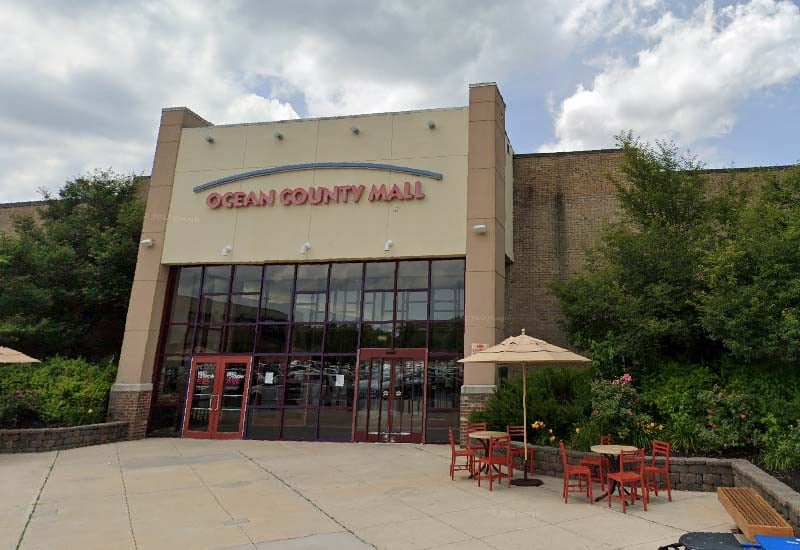TOMS RIVER, NJ – The Ocean County Mall has been the economic anchor of Toms River for decades, not Downtown Toms River. The same holds true to the Route 37 corridor and the Hooper Avenue Corrdior. In particular, the Ocean County Mall has been the town’s economic center for decades.
Despite a slowdown in the early 2000s, the Ocean County Mall is being put back on the economic map through strategic redevelopment and restructuring by its owner, Simon Properties.
The Ocean County Mall has a rich history dating back to its opening on July 20, 1976. Developed by the Edward J. DeBartolo Corporation, the mall quickly became a hub for shoppers in the region and has undergone several transformations over the years.
With all the talk about Downtown redevelopment being the key to the future of Toms River, today’s current township caretakers are ignoring the rest of the town, which has become the economic power base of the entire community.
In the 1970s, the Toms River area was experiencing rapid growth, but it still retained a relatively rural charm. Recognizing the need for an enclosed shopping destination, the mall was originally planned to be located at the intersection of Route 37 and the Garden State Parkway. However, a change of plans led to the mall’s opening at its current location on Hooper Avenue and Bay Avenue.
When the Ocean County Mall first opened its doors, it boasted three anchor stores: Sears, JCPenney, and Bamberger’s (now Macy’s).
Additionally, a cinema operated by General Cinema added to the mall’s entertainment offerings. Over the years, the mall experienced growth and expansion. In 1988, a small expansion was completed, featuring the addition of a Stern’s store, which later transformed into Boscov’s after the chain closed down.
Despite its early successes, the Ocean County Mall faced challenges in the late 1980s. Competition from a new cinema at Seacourt Pavilion led to the closure of General Cinema. However, the mall remained resilient and underwent a complete renovation in 2003. The renovation brought significant improvements to the mall’s aesthetics, including new signage, flooring, lighting, and seating areas. It also introduced a unique feature sponsored by the Deborah Heart and Lung Center: designated seating and lounge areas to encourage mall walking, complete with marked distances on discolored tiles.
In January 2018, the mall experienced another major change when it was announced that the Sears anchor store would close as part of a nationwide restructuring plan. Sears officially closed its doors on April 8, 2018. However, the closure provided an opportunity for the mall’s owner, Simon Property Group, to redevelop the space into a more diverse retail, dining, and fitness destination.
The mall’s redevelopment plan came to fruition in 2020, bringing exciting new additions to the Ocean County Mall. The former Sears space welcomed LA Fitness, a popular fitness center, along with retail stores like Five Below, offering trendy products at affordable prices. Beauty enthusiasts were delighted with the arrival of Ulta Beauty, providing an extensive selection of makeup and beauty products. Additionally, HomeSense, a home decor retailer, added to the mall’s diverse retail offerings, attracting shoppers seeking stylish and affordable home furnishings.
In recent years, the northern end of the property of the Ocean County Mall has seen a resurgence with the addition of P.F. Chang’s, Turning Point, Five Below, BJ’s Brewhouse and a southern pad location for the Caribbean-inspired Bahama Breeze. Recently, it was speculated that Texas Roadhouse will also be coming to the mall.
As the Ocean County Mall continues to evolve and grow, it remains a cherished shopping destination for locals and tourists alike. From its humble beginnings as a rural shopping center to its present status as a bustling super-regional mall, the Ocean County Mall stands as a testament to the ever-changing landscape of retail and the resilience of a community seeking convenience and enjoyment in their shopping experiences.
The mall has been credited for starting the commercial boom in Toms River that has lasted nearly fifty years as the town has grown to the eighth largest city in New Jersey. While current town leaders are hyperfocused on a small downtown area, they are overlooking the economic potential of the rest of the township, which suffers now because of that one-track mindset.

